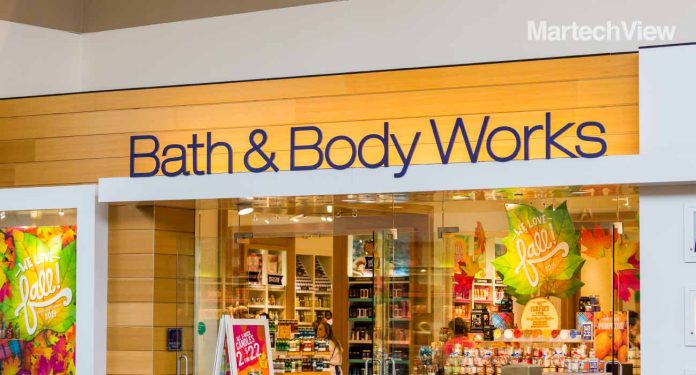Gina Boswell said the brand is now in roughly 40% of American households as it expands its assortment to areas like laundry.
Bath & Body Works’ recently expanded men’s assortment has risen to become the retailer’s fastest-growing category, CEO Gina Boswell said during an on-stage interview at Shoptalk last week.
Although it’s a relatively new and smaller part of the business, the company said last year that its men’s segment had grown by nearly 50% since 2020. The category includes face, beard care, hair, and shaving products, among other things. The company expanded the assortment less than a year ago.
Boswell said the retailer collaborated with influencers and conducted pop-up shops to raise awareness for its men’s product offering. Boswell said those efforts paid off, attracting about 750,000 men to the business. Bath & Body Works is continuing its collaborations and partnering with the Netflix series “Bridgerton.”
The company expanded its men’s shop to all stores last year, and in recent years, the retailer has focused more on areas beyond the bathroom. Bath & Body Works’ offerings now include fragrances and products for every room in the house, from the bedroom to the living room to the laundry room – the company added laundry care to its offering last fall. According to Boswell, the Bath & Body Works brand is in 40% of American households.
“What you’re seeing now is an evolution of where the customer wants us to go,” Boswell said. She also acknowledged that one of the most advantageous aspects of Bath & Body Works’ business is the ability to straddle the line between discretionary and essential purchases. An example of how the company toes that line is hand soap.
Also Read: How AI and Data Analytics Are Transforming Customer Experience
“Everybody needs hand soap, but when you add a scent and combine that with a choice of fragrance, you are now moving into an affordable luxury,” said Boswell, who became the retailer’s CEO in late 2022. “And so that is – you could argue – [a] staple but discretionary simultaneously.” Candles are another example. Many customers, she said, “don’t think they’re buying a candle. They think they’re turning their houses into homes.”
The company’s 1,800 stores are 99% profitable, “which is rare in retail,” Boswell added. Bath & Body Works completed the introduction of online buy-and-pick-up in-store to all U.S. locations last year. Like many other retailers, most customers – 80% in Bath & Body Works’ case – start browsing and shopping on the website or in the app. And when those customers come into the store, Boswell said one-third of them add more items to their BOPIS order.
Still, the company has seen sales falter recently after a period of high growth. Bath & Body Works saw record sales in 2021, partly driven by stay-at-home orders and consumers with extra cash due to government subsidies. As part of L Brands with Victoria’s Secret, the retailer was also a growth driver. After separating from L Brands, Bath & Body Works sales began normalizing in 2022.
The company reported net sales of $2.91 billion for its fourth quarter ended Feb. 3. That’s up less than 1% compared to net sales of about $2.89 billion last year. An extra week on the calendar in 2023 represented approximately $80 million in net sales. However, for the full year, the retailer’s net sales fell nearly 2% yearly to $7.43 billion from $7.56 billion.
“Like many in retail, Bath & Body saw a more difficult start to 2024, a reality that was likely heavily influenced by inclement weather,” Ethan Chernofsky, senior vice president of marketing at Placer.ai, told Retail Dive in an email. According to Placer.ai’s foot traffic data, the year-over-year change in monthly visits to Bath & Body Works was down 9.2% in January, but that decline shrunk to 1.5% in February.
Store visits have been steadily improving as the year progresses, Chernofsky said. Weekly visits were up 2.6% and 3.9% for March 4 and March 11, respectively. That indicates continued demand for products in the wellness and beauty categories, according to Chernofsky.
“In addition, viewing these types of products through the ‘affordable luxury’ lens helps drive continued optimism for the draw of these locations for consumers even amid wider economic headwinds,” Chernofsky said. “The experience-oriented nature of their locations is an additional element that incentivizes visits and helps the retailer stand out.”









